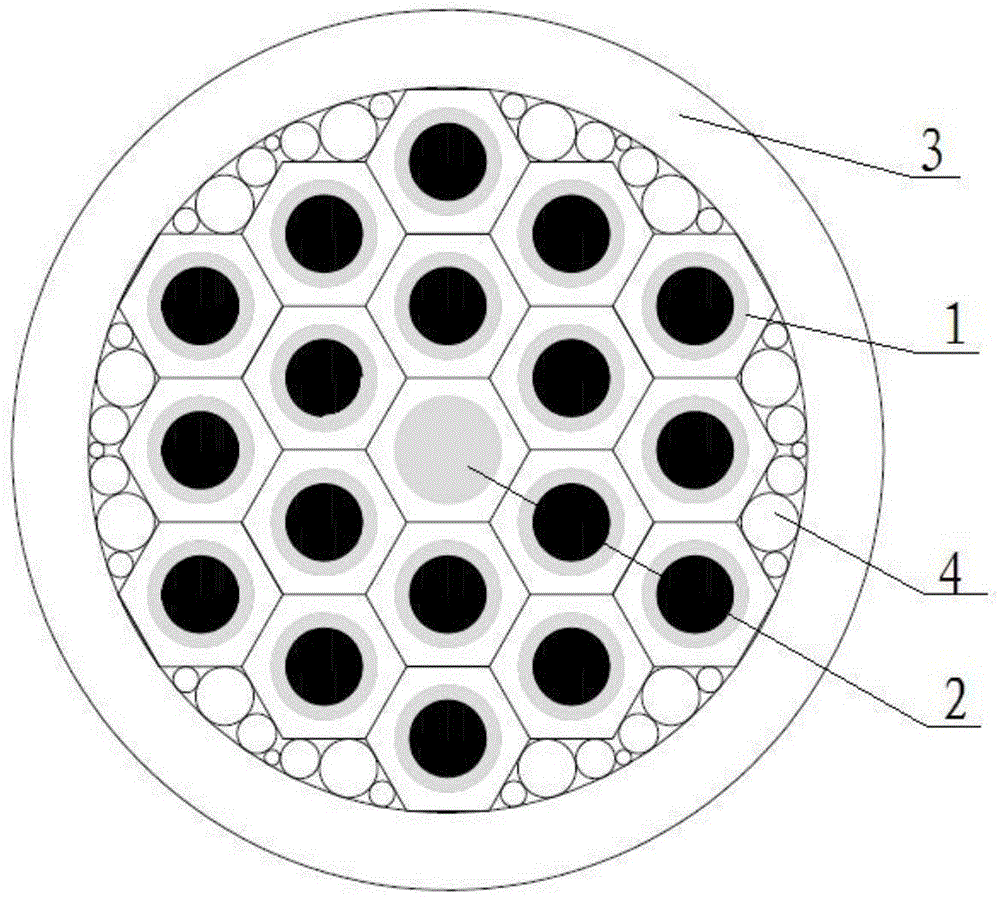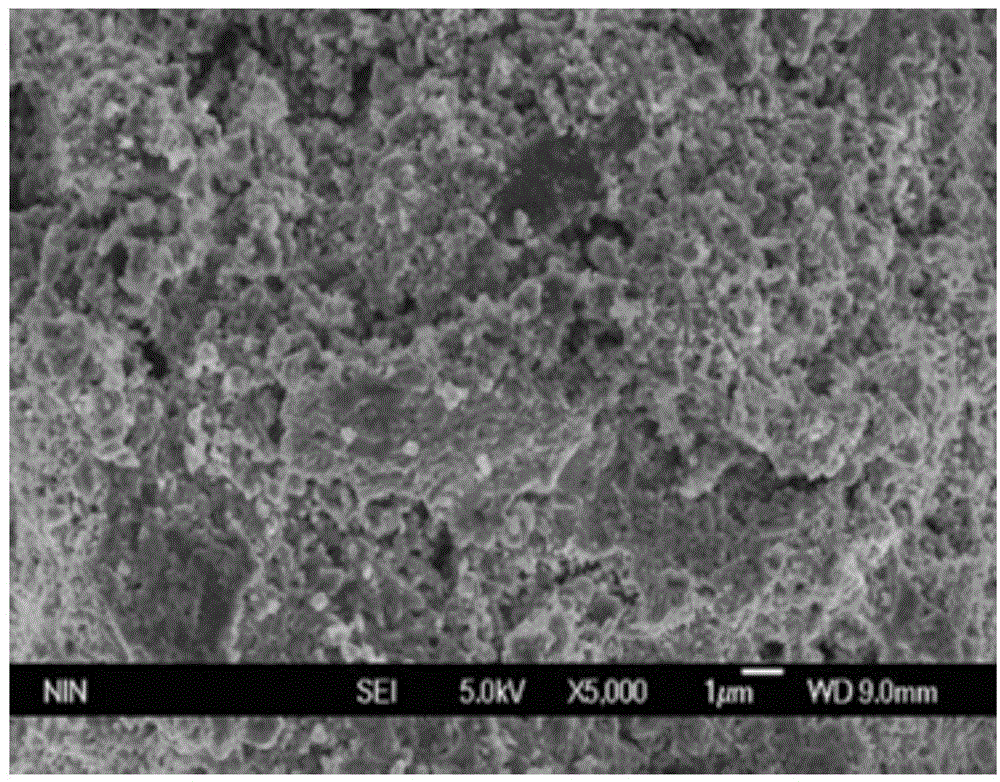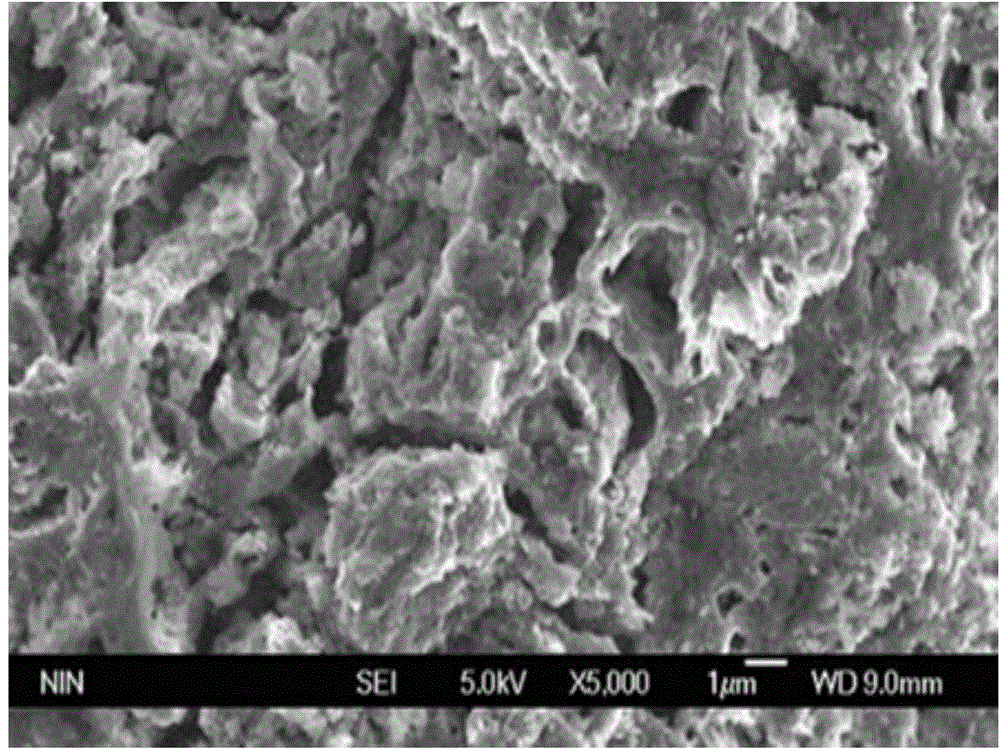Method for manufacturing multi-core MgB2 superconductive wires through extrusion technology
A technology of superconducting wire and process, applied in cable/conductor manufacturing, electrical components, circuits, etc., can solve problems such as reducing connectivity performance, reducing effective current-carrying area of superconducting current, etc., to improve connectivity and increase engineering critical current. Density, the effect of avoiding lateral deformation
- Summary
- Abstract
- Description
- Claims
- Application Information
AI Technical Summary
Problems solved by technology
Method used
Image
Examples
Embodiment 1
[0027] Step 1. In a vacuum glove box, under the protection of an argon atmosphere, mix magnesium powder, amorphous boron powder and doping powder according to the molar ratio of Mg:B:doping powder=1:1.92:0.08, and then grind and mix The precursor powder is obtained after uniformity, the doped powder is silicon carbide, the mass purity of the magnesium powder is not less than 99%, the particle size of the magnesium powder is -325 mesh, and the mass purity of the amorphous boron powder is not less than 99%, The particle size of the amorphous boron powder is 0.1 μm to 1 μm, the mass purity of the doped powder is not less than 99%, and the particle size of the doped powder is 1 μm to 10 μm;
[0028] Step 2. Put the precursor powder described in step 1 into a Nb / Cu composite casing with an outer diameter of 15 mm and an inner diameter of 10 mm to obtain a primary composite, and then process the primary composite in 15% passes 2 passes of high-speed drawing, and then 2 passes at a p...
Embodiment 2
[0039] Step 1. In a vacuum glove box, under the protection condition of argon atmosphere, the magnesium powder, amorphous boron powder and doping powder are mixed according to the molar ratio of Mg:B:doping powder=1:1.90:0.10, and then ground and mixed The precursor powder is obtained after uniformity, the doped powder is titanium carbide, the mass purity of the magnesium powder is not less than 99%, the particle size of the magnesium powder is -325 mesh, and the mass purity of the amorphous boron powder is not less than 99%, The particle size of the amorphous boron powder is 0.1 μm to 1 μm, the mass purity of the doped powder is not less than 99%, and the particle size of the doped powder is 1 μm to 10 μm;
[0040] Step 2. Put the precursor powder described in step 1 into a Nb / Cu composite casing with an outer diameter of 15 mm and an inner diameter of 8 mm to obtain a primary composite, and then process the primary composite in 12% passes Draw and process 4 times at a high r...
Embodiment 3
[0046] Step 1. In a vacuum glove box, under the protection of an argon atmosphere, mix magnesium powder, amorphous boron powder and doping powder according to the molar ratio of Mg:B:doping powder=1:1.95:0.05, and then grind and mix The precursor powder is obtained after uniformity, the doping powder is activated carbon, the mass purity of the magnesium powder is not less than 99%, the particle size of the magnesium powder is -325 mesh, and the mass purity of the amorphous boron powder is not less than 99%. The particle size of the shaped boron powder is 0.1 μm to 1 μm, the mass purity of the doped powder is not less than 99%, and the particle size of the doped powder is 1 μm to 10 μm;
[0047] Step 2. Put the precursor powder described in step 1 into a Nb / Cu composite casing with an outer diameter of 18mm and an inner diameter of 10mm to obtain a primary composite, and then process the primary composite in 13% passes 1 pass of high-speed drawing, and then 2 passes at a proces...
PUM
| Property | Measurement | Unit |
|---|---|---|
| diameter | aaaaa | aaaaa |
| particle size | aaaaa | aaaaa |
| particle size | aaaaa | aaaaa |
Abstract
Description
Claims
Application Information
 Login to View More
Login to View More - Generate Ideas
- Intellectual Property
- Life Sciences
- Materials
- Tech Scout
- Unparalleled Data Quality
- Higher Quality Content
- 60% Fewer Hallucinations
Browse by: Latest US Patents, China's latest patents, Technical Efficacy Thesaurus, Application Domain, Technology Topic, Popular Technical Reports.
© 2025 PatSnap. All rights reserved.Legal|Privacy policy|Modern Slavery Act Transparency Statement|Sitemap|About US| Contact US: help@patsnap.com



